 Back in the old days when Glastonbury was a field of medieval mud occupied by confused hippies and LSD travellers, the customary way to show your appreciation of the band was to flash the occasional peace sign or waft a spliff skywards.
Back in the old days when Glastonbury was a field of medieval mud occupied by confused hippies and LSD travellers, the customary way to show your appreciation of the band was to flash the occasional peace sign or waft a spliff skywards.
Come the punk revolution, and there was no better way to show your love for a band than by propelling copious amounts of phlegm in their direction.
By the 80s, over-excited fans felt the best way to express a heartfelt love for a band was to clamber onstage and then stage dive back into the audience, while the E’d up 90s rave generation couldn’t get it together to work out where the stage was so just swirled fluoro things around their person instead.
In America, it was a somewhat different story, with concert goers traditionally expressing a curious penchant for holding lighters aloft, a craze that never really caught on in Blighty because, frankly, it looks really daft.
 For today’s hi-tech toy generation, new ways of bigging up a band have developed.
For today’s hi-tech toy generation, new ways of bigging up a band have developed.
Mobile phones have ensured that lighters have been replaced by the blue glow of mobile phones, with forests of camera phones springing up and down at concerts like demented flamingos.
Not surprisingly, this swaying sea of interactive technology soon caught the attention of The Man, who quickly saw an opportunity to coin in it from the captive crowd.
Step forward Boomerang Mobile Media who, in partnership with Strategic Artists Management, have come up with the idea of allowing fans to send SMS messages to the band and then see their words appear on a big onstage screen. For a price, naturally.
Fans don’t even have to be at the gig, with sofa loafers stoned at home watching the gig on TV also able to ‘enjoy’ the thrill of seeing their texted mumblings appear onstage.
The concept’s already been tested out on a promotional tour for Anastacia in Europe, where around ten percent of the attendees were happy to hand over 1 euro each (~£0.68 ~US$1.26) for the privilege of blasting inane messages onstage for all to see.
 We’re not sure what the remaining 90% of the crowd thought of this pointless onscreen nonsense, but we’d be reaching for our phone zappers in double quick time.
We’re not sure what the remaining 90% of the crowd thought of this pointless onscreen nonsense, but we’d be reaching for our phone zappers in double quick time.
Call us old fashioned if you will, but when we go to gigs we want to see the band and not be distracted by an endless stream of “KT LUVS THE KLRZ 4EVER” and “WIL U MARRY ME THOM?” beaming in our faces.
Simon Renshaw, of Strategic Artists Management, soaked up every cash-till ringing minute of the show: “Fans loved the concept and were sending multiple text messages to our stage front screens in an effort to see their names, talk to their friends, tell Anastacia how much they love her and win prizes.”
“Fans were so excited about it that marriage proposals were proffered onscreen,” he gushed.
But the real profit may come from turning the band’s backdrop into a giant size virtual mall, with audiences able to call in and buy merchandise advertised throughout the gig.
Boomerang Mobile Media founder and CEO Glenn Field rubbed his hands and explained the scheme: “You see something you like, and we deliver it to your home.”
As Sid Vicious and the ghost of Rock’n’Roll reached maximum RPM in their graves, he continued, “These are exclusive items purchased through the security of your phone, and the day it should have arrived you’ll get a follow-up phone call to confirm you received it.”
Boomerang Mobile Media and Strategic Artists Management are already dreaming up additional e-commerce opportunities, including the ability to allow fans to send camera-phone pictures to the venue screens along with their text messages
No interactive stone is being left unturned in their attempts to fleece, sorry, offer maximum interactive retail opportunities, to the hapless punter.
The first time a consumer buys from Boomerang via a mobile, a live operator will jump into action and invite the user to register a personal PIN for future purchases and other products.
This can then be used to milk fans dry with subsequent mobile-only ‘exclusive’ offers, pre-orders and a myriad of other pocket-draining merchandising discounts.
Boomerang are applying the marketing experience they gained last year when working with Def Jam Recordings artist Ghostface on a festival bill.
“We allowed Ghostface to connect with fans who either were fans or who heard his music that day and became fans,” Field enthused.
“We projected a number inviting people to interact – to meet him, visit him on the tour bus, things like that – and when you called you heard a recorded message from Ghostface. People got to hear their favourite artist talk to them on their most personal device.”
Cash from chaos, anyone?
Boomerang Mobile Media
 A survey by Cingular Wireless has revealed that men spend more time yakking on mobiles than women.
A survey by Cingular Wireless has revealed that men spend more time yakking on mobiles than women.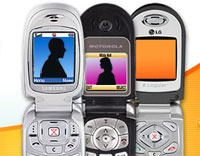 Women aren’t afraid to get snapping either, with 60 percent using their camera feature frequently or occasionally against 40 percent of men using it as often.
Women aren’t afraid to get snapping either, with 60 percent using their camera feature frequently or occasionally against 40 percent of men using it as often. It’s OK to say you don’t understand the ringtones business.
It’s OK to say you don’t understand the ringtones business. This lead to three possible reactions – the haters, the lovers and the not-bovered.
This lead to three possible reactions – the haters, the lovers and the not-bovered.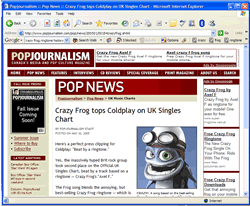
 The draw of ringtones is to individualise the phone handset. But with ringtones, there is no scarcity of supply. Everyone can have one, if they pay for it.
The draw of ringtones is to individualise the phone handset. But with ringtones, there is no scarcity of supply. Everyone can have one, if they pay for it.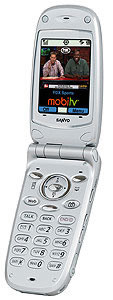 We covered the announcement of Orange’s 3G TV content to mobile handsets last week, but today we discovered who’s providing the content-to-mobiles technology powering the services.
We covered the announcement of Orange’s 3G TV content to mobile handsets last week, but today we discovered who’s providing the content-to-mobiles technology powering the services. After much careful thinking and planning they’ve ended up with an end-to-end solution, spanning ingestion; digitisation; encoding; and distribution going initially to IP TV, now cellular and wireless.
After much careful thinking and planning they’ve ended up with an end-to-end solution, spanning ingestion; digitisation; encoding; and distribution going initially to IP TV, now cellular and wireless.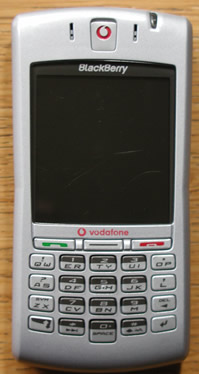 Following on from my recent detailed review of the Vodafone 7100v Blackberry, I thought it would be worth passing on a few tips I’d learnt over the process. One attempting to reassure readers through the scary process of upgrading the operating system on the 7100 Blackberry; the other, a solution for syncing your information with an Apple Mac – not something that is natively supported by RIM or Vodafone.
Following on from my recent detailed review of the Vodafone 7100v Blackberry, I thought it would be worth passing on a few tips I’d learnt over the process. One attempting to reassure readers through the scary process of upgrading the operating system on the 7100 Blackberry; the other, a solution for syncing your information with an Apple Mac – not something that is natively supported by RIM or Vodafone.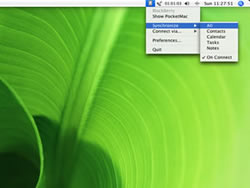 After updating the software, which by the way you need a Windows computer for, I set about syncing the Blackberry with my Mac. My existing phone, the Sony Ericsson P910i, works correctly out of the box with Mac OS X’s iSync application, syncing wirelessly over Bluetooth within a few seconds.
After updating the software, which by the way you need a Windows computer for, I set about syncing the Blackberry with my Mac. My existing phone, the Sony Ericsson P910i, works correctly out of the box with Mac OS X’s iSync application, syncing wirelessly over Bluetooth within a few seconds.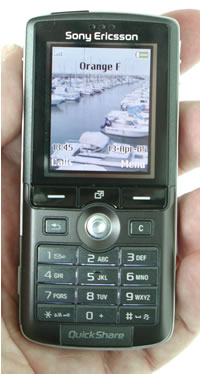 About a month ago I had the chance to spend two days with a pre-release version of the Sony K750i handset and as it’s now closer to the release of the handset, I thought an overview of the product might be timely.
About a month ago I had the chance to spend two days with a pre-release version of the Sony K750i handset and as it’s now closer to the release of the handset, I thought an overview of the product might be timely.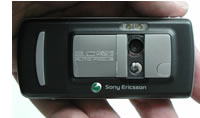 You morph it in to a camera by sliding the lens cover at the back of the device. Using the 2mpx camera you can easily captures clear pictures with vivid colours during light days.
You morph it in to a camera by sliding the lens cover at the back of the device. Using the 2mpx camera you can easily captures clear pictures with vivid colours during light days.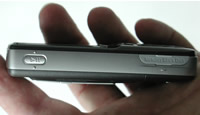 Video recording is OK, given the devices restrictions.
Video recording is OK, given the devices restrictions.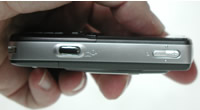 I’d just assumed the K750i would have a ‘normal’ headphone jack, letting me choose the headphones that excited me, but the provided headphones had to be connected via a Sony-interface at the bottom of the phone. This brings obvious advantages, like them having a mic, letting to let you use them as a hands-free set.
I’d just assumed the K750i would have a ‘normal’ headphone jack, letting me choose the headphones that excited me, but the provided headphones had to be connected via a Sony-interface at the bottom of the phone. This brings obvious advantages, like them having a mic, letting to let you use them as a hands-free set.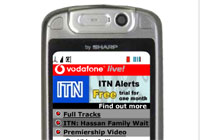 Vodafone execs spent the morning cackling wildly to themselves, throwing wads of dollar bills in the air and rolling around silk-covered beds covered in cash as record revenues and profits for its full year results were announced to the world.
Vodafone execs spent the morning cackling wildly to themselves, throwing wads of dollar bills in the air and rolling around silk-covered beds covered in cash as record revenues and profits for its full year results were announced to the world.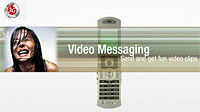 But in-between triumphant licks of triple-thick Cornish clotted cream, Sarin sounded a cautious note, warning that competition was rising.
But in-between triumphant licks of triple-thick Cornish clotted cream, Sarin sounded a cautious note, warning that competition was rising.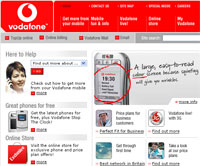 Vodafone performed particularly well in strong markets such as the US and Spain, with revenues growing at more than 20% year on year.
Vodafone performed particularly well in strong markets such as the US and Spain, with revenues growing at more than 20% year on year.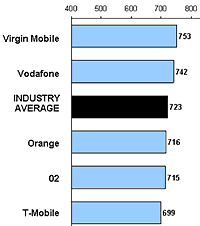 Orange has triumphed in a study rating customer satisfaction among mobile phone contract providers, with Virgin Mobile coming in top in the pre-pay sector, according to the 2005 UK Mobile Telephone Customer Satisfaction Study, run by J.D. Power and Associates.
Orange has triumphed in a study rating customer satisfaction among mobile phone contract providers, with Virgin Mobile coming in top in the pre-pay sector, according to the 2005 UK Mobile Telephone Customer Satisfaction Study, run by J.D. Power and Associates. The authors of the study claim that the results reflect the positive impact of increasing competition and lower tariffs.
The authors of the study claim that the results reflect the positive impact of increasing competition and lower tariffs. The contract segment seemed a well-chuffed bunch too, with satisfaction levels rising to 733 index points from 720 index points in 2004.
The contract segment seemed a well-chuffed bunch too, with satisfaction levels rising to 733 index points from 720 index points in 2004. Mobile technology and photo messaging is still a hot potato, with 35 percent of all mobile owners snapping on camera phones and 21 percent sending photos from their mobiles.
Mobile technology and photo messaging is still a hot potato, with 35 percent of all mobile owners snapping on camera phones and 21 percent sending photos from their mobiles.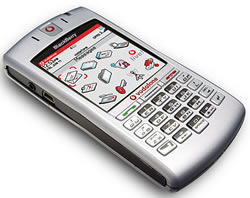 Part
Part 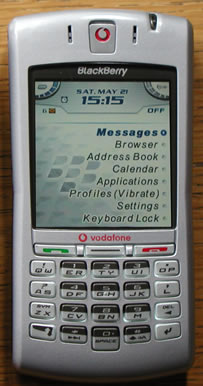 Screen
Screen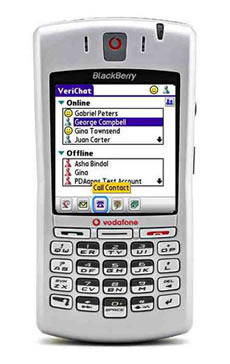 When Web pages are rendered, there are a lot of unnecessary images which would be represented instead by text. This text is usually shown in the ALT tags of the HTML from which the pages are rendered. On a lot of sites, there are a lot of navigation images, which are not good for render time on a low-powered device like the Blackberry: every time a page is opened containing images, these images are downloaded (this takes a long time with the Internet connection on a 7100v being at dial-up speeds). When downloaded these images are resized individually so as to fit on its screen.
When Web pages are rendered, there are a lot of unnecessary images which would be represented instead by text. This text is usually shown in the ALT tags of the HTML from which the pages are rendered. On a lot of sites, there are a lot of navigation images, which are not good for render time on a low-powered device like the Blackberry: every time a page is opened containing images, these images are downloaded (this takes a long time with the Internet connection on a 7100v being at dial-up speeds). When downloaded these images are resized individually so as to fit on its screen.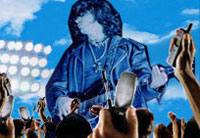 Back in the old days when Glastonbury was a field of medieval mud occupied by confused hippies and LSD travellers, the customary way to show your appreciation of the band was to flash the occasional peace sign or waft a spliff skywards.
Back in the old days when Glastonbury was a field of medieval mud occupied by confused hippies and LSD travellers, the customary way to show your appreciation of the band was to flash the occasional peace sign or waft a spliff skywards. For today’s hi-tech toy generation, new ways of bigging up a band have developed.
For today’s hi-tech toy generation, new ways of bigging up a band have developed. We’re not sure what the remaining 90% of the crowd thought of this pointless onscreen nonsense, but we’d be reaching for our phone zappers in double quick time.
We’re not sure what the remaining 90% of the crowd thought of this pointless onscreen nonsense, but we’d be reaching for our phone zappers in double quick time.